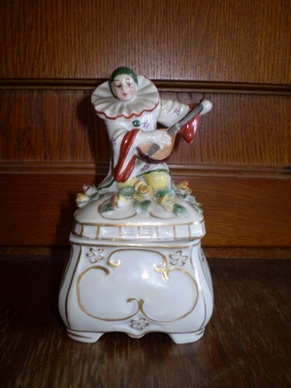I searched on the net and I found the “beehive” sign used for Vienna porcelain in 1820-1827 on the bottom of one of my porcelain figurines. I knew it was old, but I am not certain if it is a forgery. I read on the site that the sign does not have to be perfectly symmetric. Can you help me, please?
And if you think it is original can you give me an approximate price?
[img size=150][/img] [img size=291]https://kovels.com/media/kunena/attachments/legacy/images/Vienna.jpg[/img]
The auction house rejected it because it is *not* an item created by the royal porcelain factory in Vienna. Regardless of design or theme, real Royal Vienna items automatically mean big $$$, and no auction house would let such a chance slip … they simply did not tell you the truth.
Next to a simple base mark, people should always check other indicators when trying to ID an item. In this case, the style and subject of the item does not match the period of existence of the RPF Vienna -and- the overall ‘quality’ (especially of the decoration) is very bad. Compare left-hand and right-hand side of the gilding: the left-hand side is crooked.
There were many companies in and around Vienna (or rather, Carlsbad in Bohemia) that legally used the Bindenschild mark. From the pictures however, I would rather *guess* that your item is a vintage (post-WW2) “Made in Japan” job.


